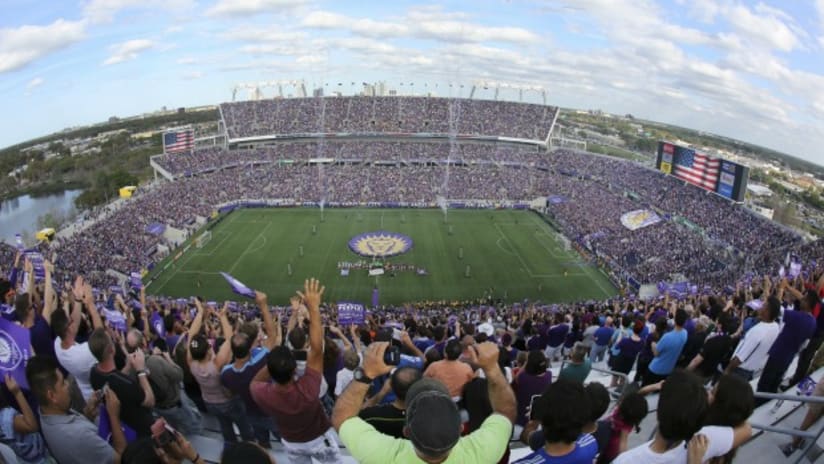ORLANDO – Orlando City SC solved two problems Friday, announcing they’ll bypass delayed state funding for their new stadium and finance 100 percent of the project in house, while also increasing capacity to sate the overwhelming demand for soccer in Central Florida.
Team owner Flavio Augusto da Silva made the announcement in a press conference, marking a shift in course from what was originally intended to be a city-owned stadium on publicly-owned land. Now, da Silva said, the stadium will be owned and operated by the team, and Orlando City will buy the land from the city.
“I can’t think of a more win-win scenario,” Orlando mayor Buddy Dyer said at the press conference. “The direct economic benefit to local businesses has already been seen, and it shows how Orlando City continues to think outside the box. It ensures we will have a great stadium and that MLS will be an even bigger success story in Central Florida.”
The announcement comes after a proposal guaranteeing $30 million in funding from the state was delayed in the legislature. It allows the team to move forward with expansion from the initial plans of an approximately 20,000-seat stadium to the new capacity of 25-28,000.
Construction is not expected to take place immediately as the team finalizes plans for enhancements to amenities and technology, meaning it won’t be completed until summer 2016. They’ll open next season in the Citrus Bowl, which has drawn an average of 37,400 fans for the Lions’ inaugural MLS season.
“It has taken a lot of work behind the scenes to get to this point,” team president Phil Rawlins told MLSsoccer.com following the press conference. “But we know it is the right thing for us. The market has proven this to be a much bigger and more powerful source than even we thought.
“Building a 19,000-seat stadium wasn’t going to cut it, and, once we realized we needed alternative funding, it gave us the opportunity to see it as a blank canvas and draw up something completely new.”
- Get more OCSC news at OrlandoCitySC.com
The new stadium will be the second-largest soccer-specific venue in the league after Toronto’s 30,000-seat BMO Field and it will remain in its original central downtown location in the Paramore district.
It will also provide property tax revenue for the city and takes Orange County off the hook for the $20 million it had pledged for the project.
“This way we get to control all operations of the main asset,” Rawlins said. “It is very much to the benefit of the franchise and 100 percent of the funding comes from within the club.
“But we couldn’t have done this without the vision of Major Dyer and the various commissioners. Without them, it would have been impossible. They are very much supporters in all senses of the word and it is a great day for Orlando as a result.”
Da Silva was also quick to point to the level of fan support for the change in thinking.
“This is a big signal how we believe in this city, how we believe in this community, how we believe in these people, this marketplace and these fans,” he said.













